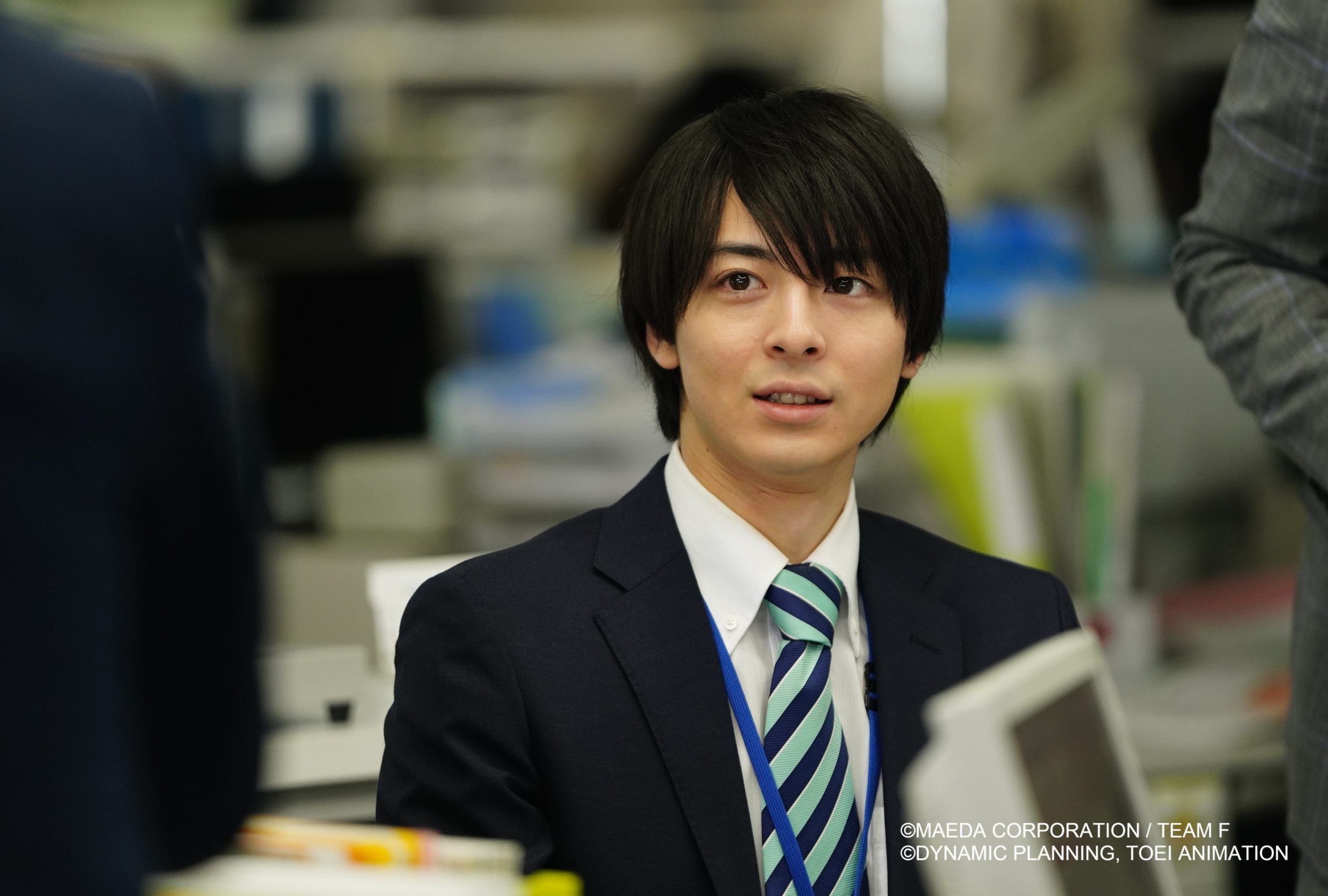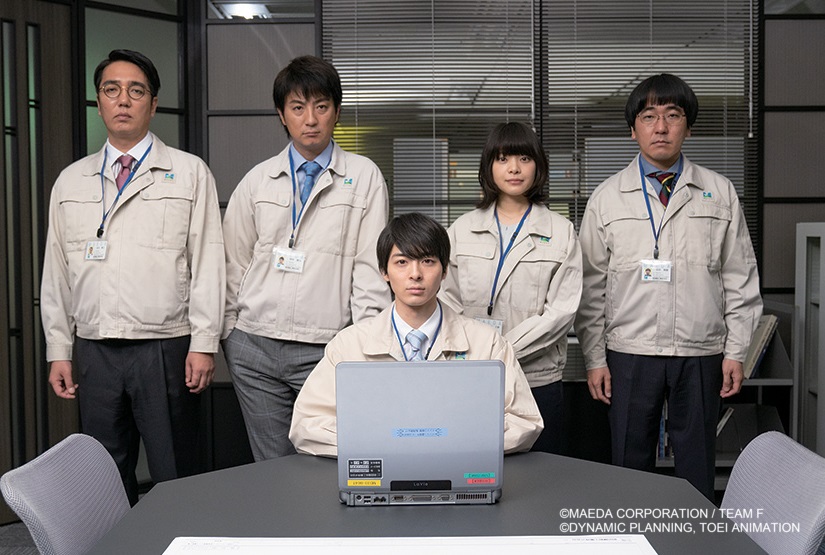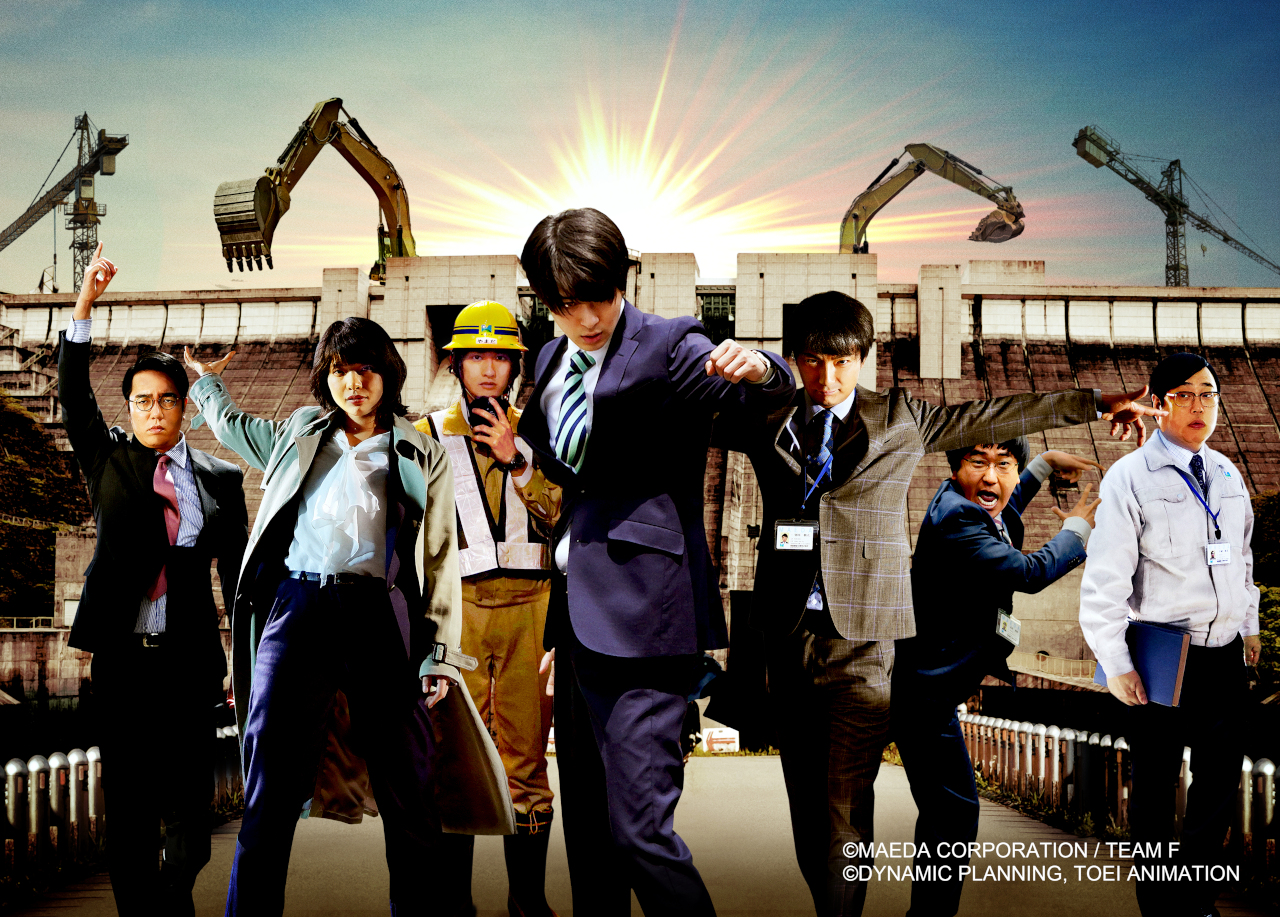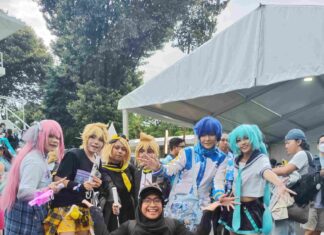Project Dream – How to Build a Mazinger Z Hangar begins when a group of workers at Maeda Corporation, a Japanese construction company, debate a silly question: is it actually possible to build a hangar for the Mazinger Z robot in real life? Public Relations (PR) and former engineer Bessho says it’s possible. Overly enthusiastic PR Manager Asagawa agrees. However, PR staff Chikada disagrees because some parts of the original anime are too difficult to be built in real life. Another PR staff member, Emoto, just nods while also looking disinterested, while Doi, another PR staff member, wonders whether they should have debated this subject in the first place.
But their debate is heard by other departments. It becomes a talk in the office: Can they actually build a Mazinger Z hangar in real life? One thing leads to another, and suddenly, the Maeda Corporation PR Team is tasked with analysing whether it’s possible to build a Mazinger Z hangar or not and calculating how much it would cost. Five people from the PR Team who initiated the debate are assigned to do this task.

© Dynamic Planning, Toei Animation
At its heart, Project Dream – How to Build a Mazinger Z Hangar is a celebration of otaku passion. In the film, we see something that otaku often do while enjoying their hobby: take a ridiculous idea, explore it, and commit to it with unwavering sincerity. In the film, we see a bunch of otaku, not just a robot otaku but also geology otaku, physics otaku, and construction otaku, try to use their knowledge to design a Mazinger Z hangar that is plausible to build in real life. While the premise may seem absurd, the film treats it with genuine respect, making it a ridiculous, yet enjoyable and surprisingly insightful film.
You may wonder why I use the term otaku too loosely here. Geology otaku? Physics otaku? Are they just a field of study? The truth is, while the media often associates otaku with animanga fandom, the term does have some broader uses in Japan than people abroad may tend to think. In the Giant Killing manga, for example, coach Sakura is labelled by his friends as a soccer otaku, someone who is very passionate about soccer. Aida Miho also describes otaku more broadly as people who collect, possess, and accumulate various information and objects concerning something (From Kam Thiam Huat’s Thesis, 2008). It’s more like a labelling phenomenon for Japanese society, something like the term “nerd” in the Western world.
Also read: Otakuology: Approaches to Studying Otaku
What is also interesting is that a real-life event inspires the film. Maeda Corporation itself is a real construction company in Japan. After the Japanese economic bubble, the construction industry is struggling. The poor economic situation led to fewer construction projects, and the industry’s public image also suffered. Because of this, in 2002, Maeda Corporation’s PR department suggested the creation of the “Fantasy Marketing Department” to use fictional structures from pop culture to promote the construction industry. Their first project was calculating the cost of building the hangar from Mazinger Z anime series and posting it on the company’s website. The public reacted positively, with the website featured in Yahoo! Japan, and the website almost crashed due to the overload of access. This success inspired the creation of the film, a dramatisation which focuses on how Maeda Corporation’s PR department calculates the cost of Mazinger Z Hangar.

© Dynamic Planning, Toei Animation
Based on the film, it seems the project is more difficult than it seems. But in truth, the PR department is the one that makes it harder for themselves. This isn’t a real construction project, just a marketing one. They can just do a surface-level calculation and call it a day. Instead, the team treats it wholeheartedly. They rewatch all 92 anime episodes, consult the experts for the technical aspect, and even studying the physics behind civil engineering. Yet, this sincerity might be the reason why the project got public attention in the first place. People were not just interested in the Mazinger Z itself or the result of Maeda Corporation’s calculation. The public is also interested in how a silly idea is executed wholeheartedly. Seeing people doing their best is also a part of this film’s charm.
As the otaku do their project in the film, their enthusiasm slowly spreads, and the staff members who don’t look like an otaku at first slowly show their otaku side. This is another interesting idea that the film brings. It seems that everyone in the film has a “nerd switch” that can be flipped under the right circumstances, and people’s enthusiasm can be infectious. Another idea that is also explored by the film is collaboration. While otaku are often labelled as people who avoid social interaction (a stereotype also discussed in Kam’s thesis), the film shows that to fulfil their “otaku goal”, collaboration is needed. Their progress to calculate the cost of the Mazinger Z hangar often depends on how they reach out to other otaku for advice, reinforcing the sense of community and human interaction within otaku culture.
The focus on the technical aspects of the construction industry and otaku behaviour may sound boring to viewers. However, for most of the runtime, the film dramatises the scenes in a very humorous tone. The film captures how the otaku treat this simple “how to build a Mazinger Z hangar” question very seriously. Really, the film is full of ridiculous moments. Watching otaku go full chuuni (delusionally dramatic) as they do this project is hilarious and endearing. At the end of the film, it seems they were genuinely trying to save the world. It’s ridiculous, but also very funny.

© Dynamic Planning, Toei Animation
Beyond the ridiculous humour, Project Dream – How to Build a Mazinger Z Hangar also presents intriguing ideas about otaku culture. It shows how each person has their own things they are passionate about, and how otaku collaborate with others to reach their goal. Turns out, the hobby that you nerd about could be the one that helps you connect with others. In the end, I think part of the charm of the movie is watching people treat a silly idea seriously, which means: watching otaku doing otaku things. This is a silly movie about people treating a silly idea seriously. A film about otaku.
Also, in case you’re curious, here’s the conclusion of their project based on Maeda Corporation’s calculation: it was estimated that 7.2 billion yen is needed to construct a Mazinger Z hangar, with a construction time of 6 years and 5 months.
Further Read
The Common Sense that Makes the “Otaku”: Rules for Consuming Popular Culture in Contemporary Japan by Kam Thiam Huat (Thesis in the National University of Singapore, 2008).
Maeda Corporation’s Fantasy Marketing Department: Real-World Inspiration from Anime Dreams by Amano Hisaki (2021). From www.nippon.com.
The Indonesian Anime Times | Review by Dany Muhammad







